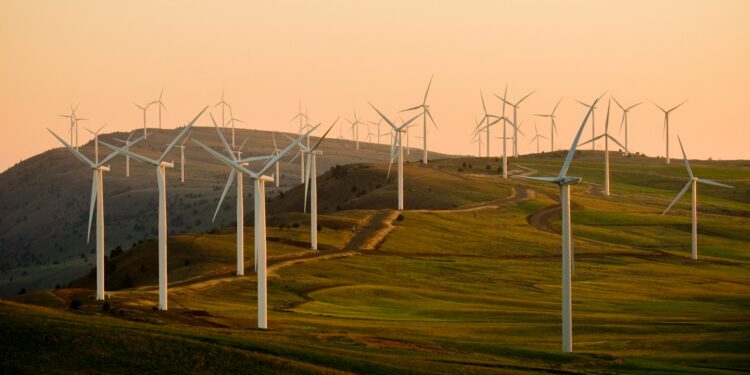Across the globe, investors are realizing that greenfield land — undeveloped or underutilized plots — is one of the most valuable assets in the renewable energy era. From the deserts of the American Southwest to emerging markets in Asia and Africa, strategic acquisition and development of these sites are generating billions in revenue, while helping to decarbonize global energy systems.
This article explores the technical, scientific, and financial strategies behind transforming greenfield land into high-yield alternative energy projects, and why forward-thinking investors are betting on land as the ultimate energy asset.
1. Why Greenfield Land Is a Premium Asset for Alternative Energy
Greenfield land offers several advantages over brownfield or urban sites for large-scale energy projects:
- Unconstrained Land Use: No pre-existing infrastructure or zoning restrictions, allowing for utility-scale solar farms, wind arrays, or hybrid systems.
- Proximity to Transmission Lines: Strategic selection can reduce grid interconnection costs, a major factor in project feasibility.
- Geographic Optimization: Investors target areas with high solar insolation, wind potential, or geothermal resources, maximizing energy yield per acre.
- Long-Term Appreciation: Renewable energy projects increase land value exponentially, especially when paired with leases or PPAs with corporate or utility off-takers.
For example, in the U.S., solar investors often acquire desert or semi-arid land for 2–5% of its ultimate project value, only to generate hundreds of millions in electricity sales over 20–25 years.
2. Technical Approaches to Monetizing Land
Investors combine cutting-edge energy technologies to maximize output and revenue:
a. Utility-Scale Solar and Photovoltaics (PV)
- Mega-Arrays: Hundreds of acres can host 50–500 MW solar farms, sometimes exceeding $500 million in energy assets.
- Single-Axis and Dual-Axis Tracking: Increases efficiency by 15–25% over fixed panels.
- Energy Storage Integration: Pairing solar with lithium-ion or flow batteries enables energy arbitrage, selling power during peak demand at higher rates.
b. Wind and Hybrid Wind-Solar Farms
- Complementary Resource Profiles: Wind often peaks at night, solar during the day. Combining both creates consistent, dispatchable energy.
- Large-Scale Turbine Deployment: Modern turbines can produce 10–15 MW per site, scalable to hundreds of MW in wind corridors.
c. Co-Generation and Biomass Integration
- Co-locating solar or wind with bioenergy or natural gas co-gen systems allows investors to maintain output during intermittent conditions, creating reliable baseload energy for corporate or industrial clients.
d. Data Centers, EV Hubs, and Ancillary Revenue Streams
- Land Monetization Beyond Energy: Investors lease portions of energy-rich land to data centers, EV charging hubs, or hydrogen production facilities, multiplying revenue without additional land acquisition.
3. Financial Models: How Investors Capture Billions
The financial attractiveness of greenfield alternative energy development stems from multi-layered revenue streams:
- Power Purchase Agreements (PPAs): 15–25 year contracts with utilities or corporates provide predictable cash flow.
- Renewable Energy Credits (RECs): Selling environmental credits adds $10–50/MWh to project revenue.
- Grid Services: Battery storage projects participate in frequency regulation, demand response, and ancillary services markets, generating additional income.
- Land Appreciation and Leasing: Infrastructure development increases land value, enabling resale or long-term leasing to third parties.
Case Example (Hypothetical):
- 1,000-acre solar + battery project in Arizona:
- Solar Capacity: 200 MW
- Battery Storage: 400 MWh
- Initial Land Acquisition: $20 million
- CAPEX: $300 million
- Revenue via PPA + Storage Arbitrage: $50 million/year
- Net Present Value (NPV) over 25 years: ~$650 million
With additional leases to a data center or hydrogen facility, total investor returns can exceed $1 billion, illustrating the transformative power of greenfield land in energy finance.
4. Strategic Considerations for Investors
- Site Selection: Solar irradiance, wind patterns, topography, and proximity to transmission lines determine project viability.
- Permitting & Environmental Compliance: Large-scale projects require zoning approval, environmental impact assessments, and community engagement, which can be streamlined through early planning.
- Technology Stack: Optimizing PV panels, battery chemistries, inverters, and grid interface maximizes energy yield and ROI.
- Financial Engineering: Leveraging debt, tax incentives (e.g., U.S. ITC, production tax credits), and green bonds enhances return on equity.
Investors who combine technical expertise with financial engineering dominate this market.
5. Global Expansion Opportunities
- United States: Southwest deserts, Midwest plains, and Southern wind corridors offer millions of acres for scalable projects.
- Asia: Emerging markets in India, Southeast Asia, and China present low-cost land with high renewable potential, ideal for export-oriented energy projects.
- Africa: Large greenfield sites with high solar irradiance are attracting foreign investors seeking high-yield renewable energy opportunities.
Greenfield investments are not just about energy—they are strategic bets on land value, energy markets, and sustainability trends, making them attractive for multi-billion-dollar portfolios.
6. Scientific and Technical Insights
- Energy Yield Optimization: Using satellite mapping, LIDAR surveys, and AI-driven modeling, investors can maximize MW per acre while minimizing environmental impact.
- Battery Storage Innovation: Flow batteries, solid-state systems, and hybrid lithium-iron-phosphate grids are increasing dispatchable energy reliability.
- Hybrid System Integration: Combining solar, wind, co-gen, and storage creates predictable baseload power, transforming intermittent renewables into bankable assets.
- Carbon Accounting: Advanced lifecycle assessments ensure projects are carbon-negative, enhancing investor appeal and access to ESG funds.
7. The Bottom Line
Greenfield land is no longer just “empty dirt.” For investors with technical expertise, financial strategy, and a sustainability vision, it is a platform for multi-billion-dollar wealth creation. By combining utility-scale renewable energy, storage, co-generation, and ancillary revenue streams, investors are generating predictable, scalable, and ESG-aligned returns.
The convergence of energy innovation, land strategy, and finance is reshaping the way capital flows into sustainable infrastructure — and the payoff can be transformative.
Call to Action
For investors and developers looking to explore greenfield renewable energy opportunities, understand technical integration strategies, or model multi-revenue energy projects, contact Phil at phil@pacificoenergy.com to discuss cutting-edge feasibility studies and market insights.


















